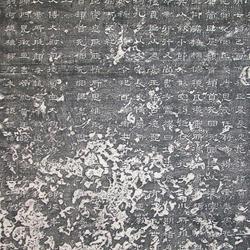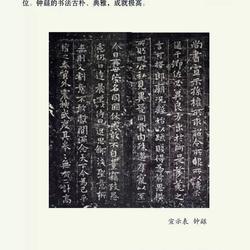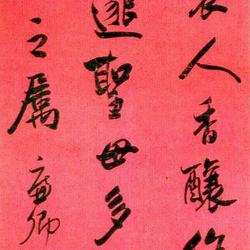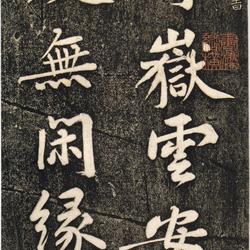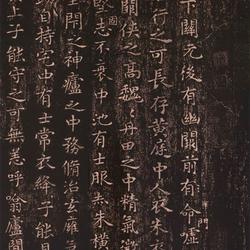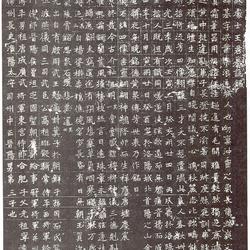Ouyang Xun's regular script "Inscriptions on the Stupa of Yong Zen Master Huadu Temple" in multiple editions
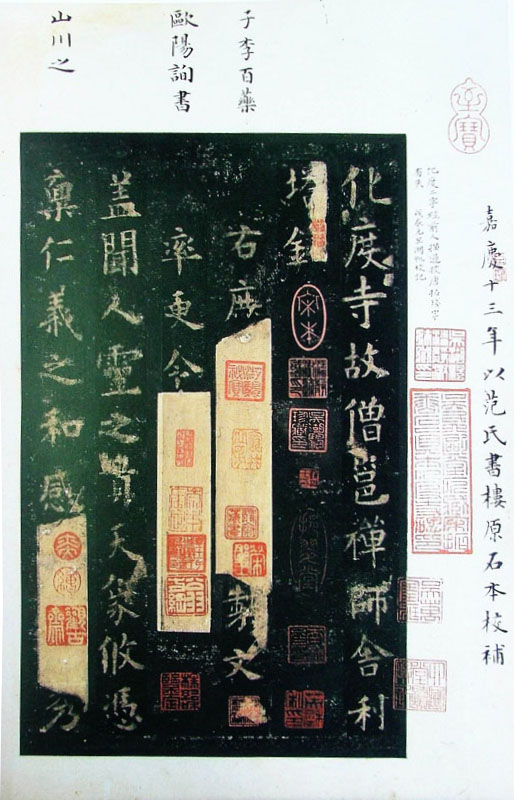
Ouyang Xun's Song Rubbings of the Tower Inscription of Zen Master Yong at Huadu Temple
"Inscription on the Stupa of Yong Zen Master of Huadu Temple", written by Baiyao of Tang and Li, written by Ouyang Xun, inscribed in the fifth year of Tang Zhenguan (631). The original Shi Jiu lost, Weng Fanggang test is thirty-five lines, thirty-three characters.
The calligraphy of this monument is strong and tightly structured. "Jiucheng Palace" was written a year earlier, so the style is very similar, but the rigor is more than stretched. Yuan Zhao Mengfu commented: "Tang Zhenguan is able to write, Ouyang rate is the best, and the "Yong Zen Master Ta Inscription" is also the best." The Qing Dynasty Jinshi family Weng Fanggang spoke highly of the calligraphy of this stele, thinking that this stele was the best In "Jiucheng Palace Liquan Inscription". Although the praise is too much, it can show that the calligraphy of this monument does have its own uniqueness.
According to legend, at the beginning of the Qingli of the Northern Song Dynasty, Fan Yong saw the original monument of "Huadu Temple" at Nanshan Buddhist Temple, and sighed as the most precious treasure. The monks in the temple mistakenly believed that there were treasures in the stone, breaking the stone to ask for it, but could not abandon it. After the Jingkang Rebellion, the remnants of rocks were broken and lost. Several reprints have been circulated in the Song Dynasty.
The collection of the Shanghai Library (above), that is, the Sioutang edition is an original stone rubbing of the Tang Dynasty, and it is the only one at home. At the beginning of the book are Wu Hufan's "Study of Stele Survey" and "Stele Form of Huadu Temple". In the book, there are inscriptions by Weng Fanggang, Luo Zhenyu, Wu Hufan, Paul Pelliot, Shen Yinmo, Li Hongyi, Zhu Xiaozang, Wu Mei, Jiang Zuyi, Ye Gongchuo, etc. A photocopy of the "Dunhuang Remnant" is attached to the end of the booklet.
This scripture is collected by Ming Wangyan (Meng Yang), Chen Bogong, Qingcheng Prince, Rongjun Wang, Pan Zuyin, etc. As far as Pan, he became the dowry of his niece Pan Jingshu and went to Wu Hufan's collection. The Wu family combined this book with the three steles of Song Tuo'u's "Jiucheng Palace", "Yu Gonggong", and "The Birth of Huangfu" in a box, and the name is "The Secret Collection of Four Europes".
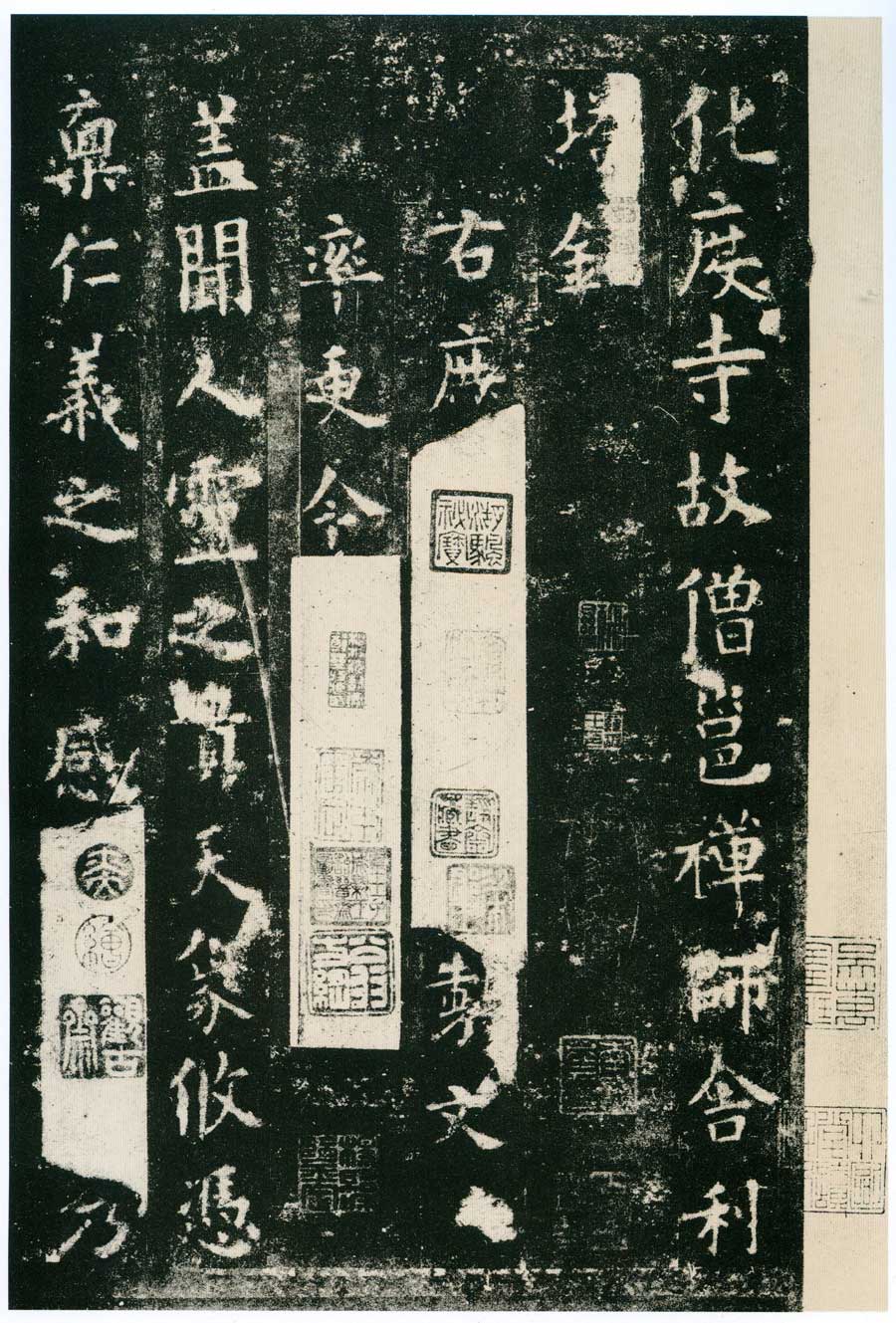
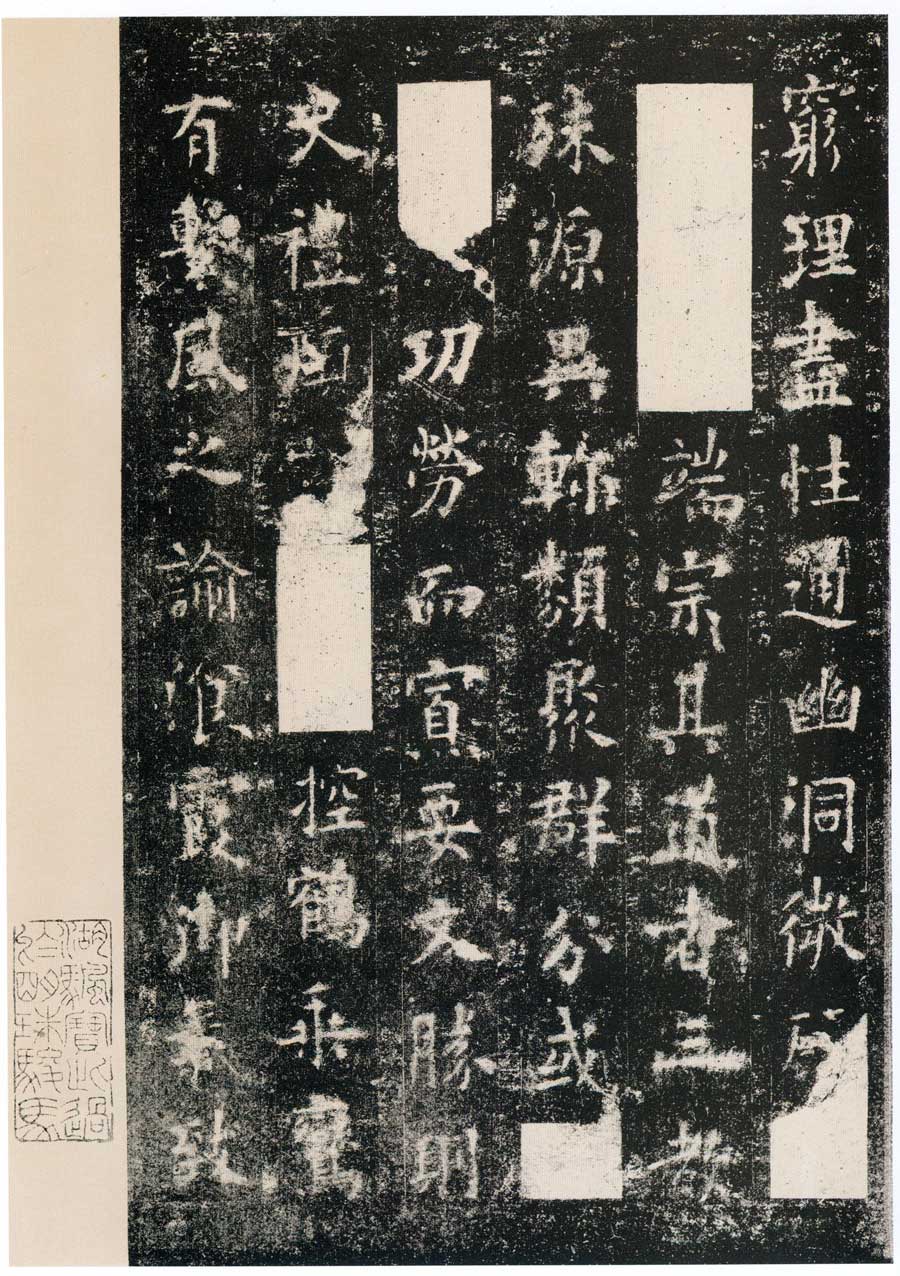
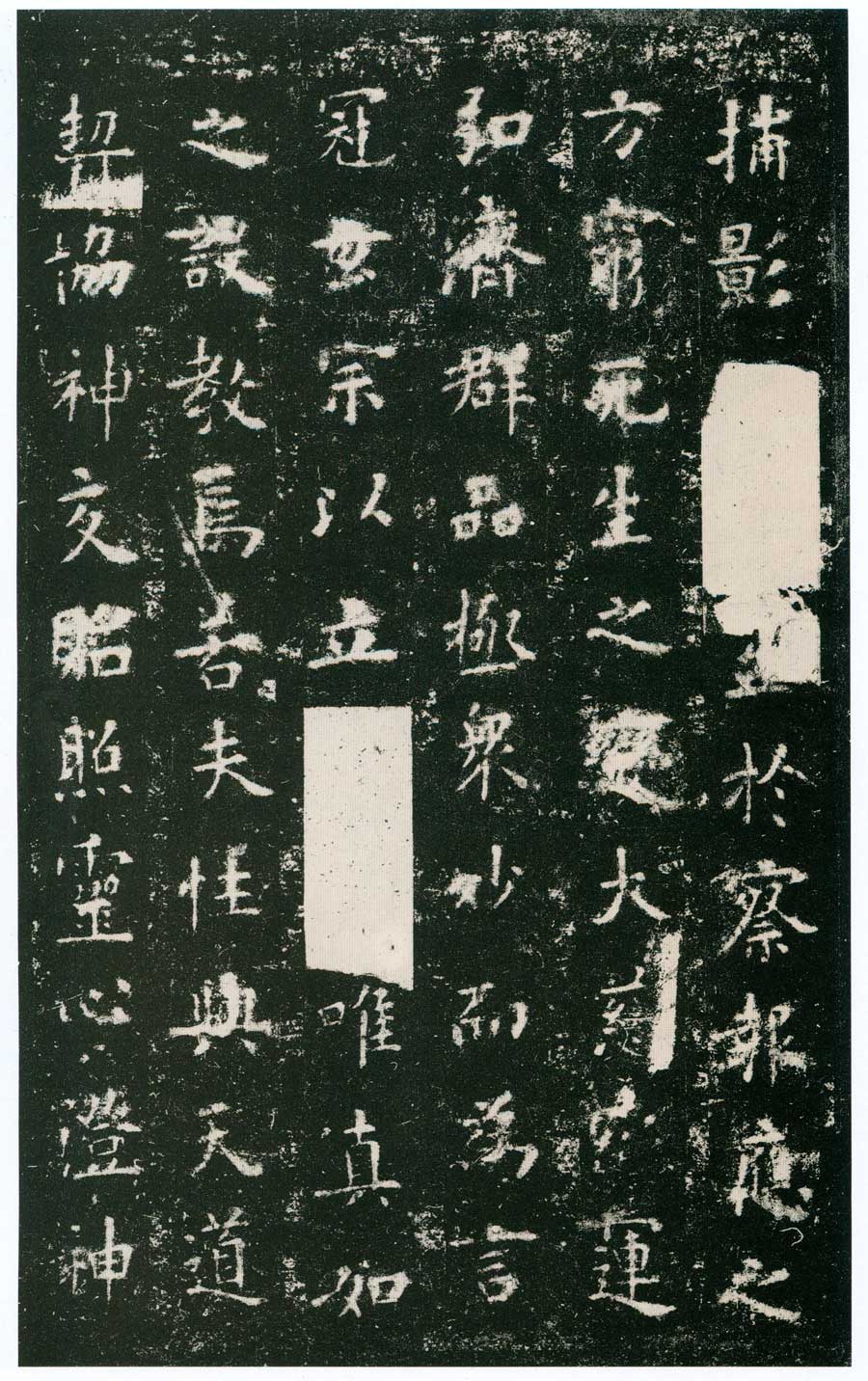
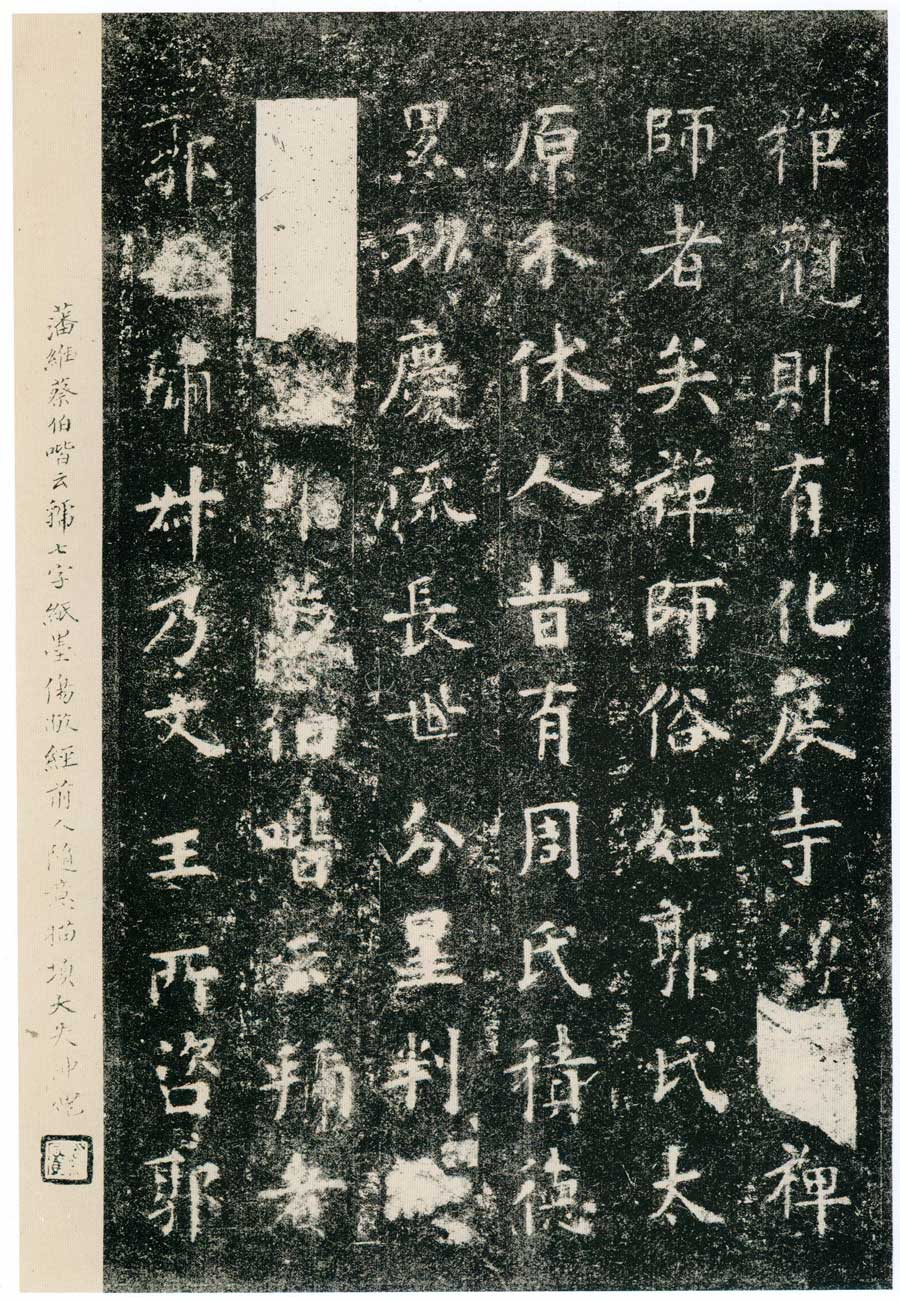
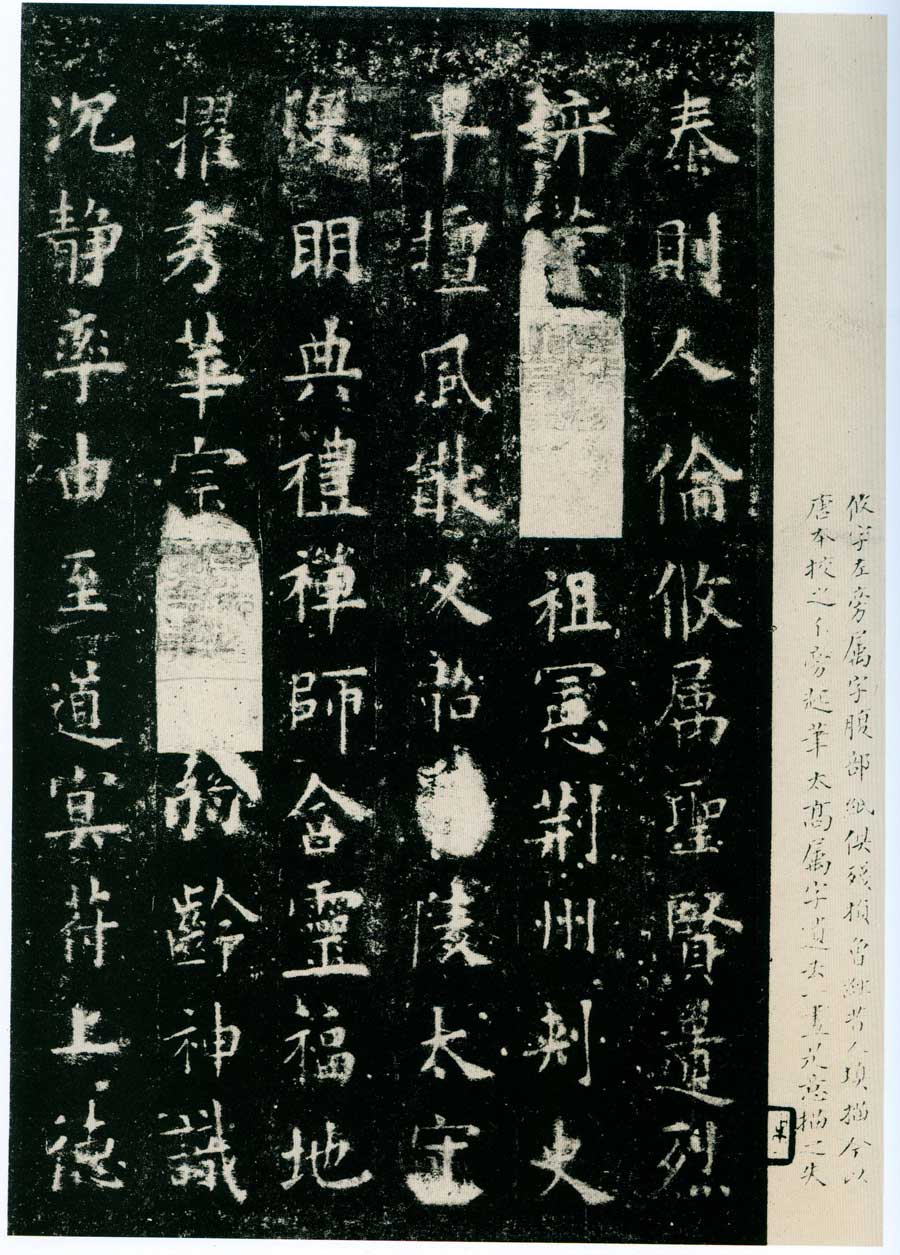
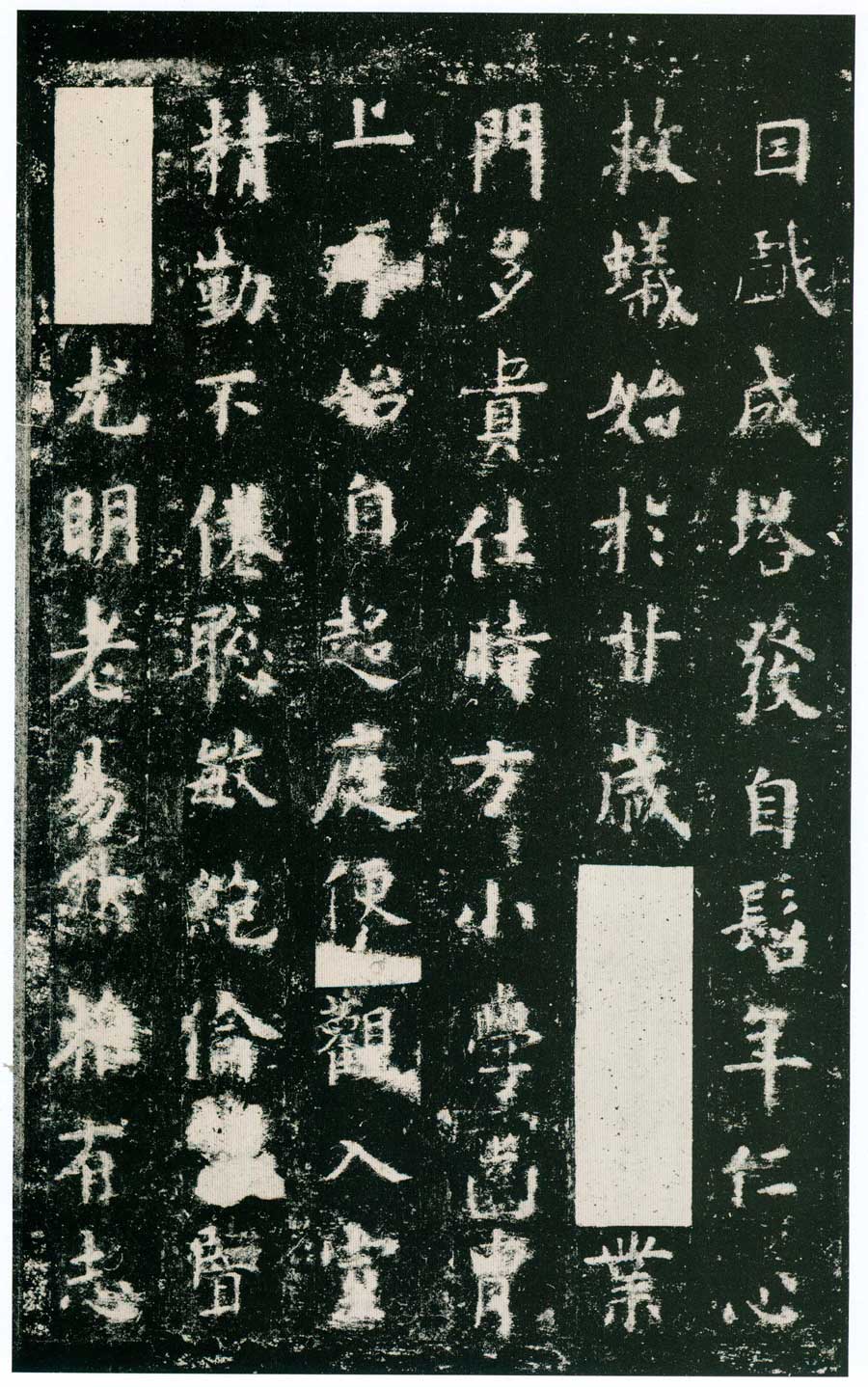
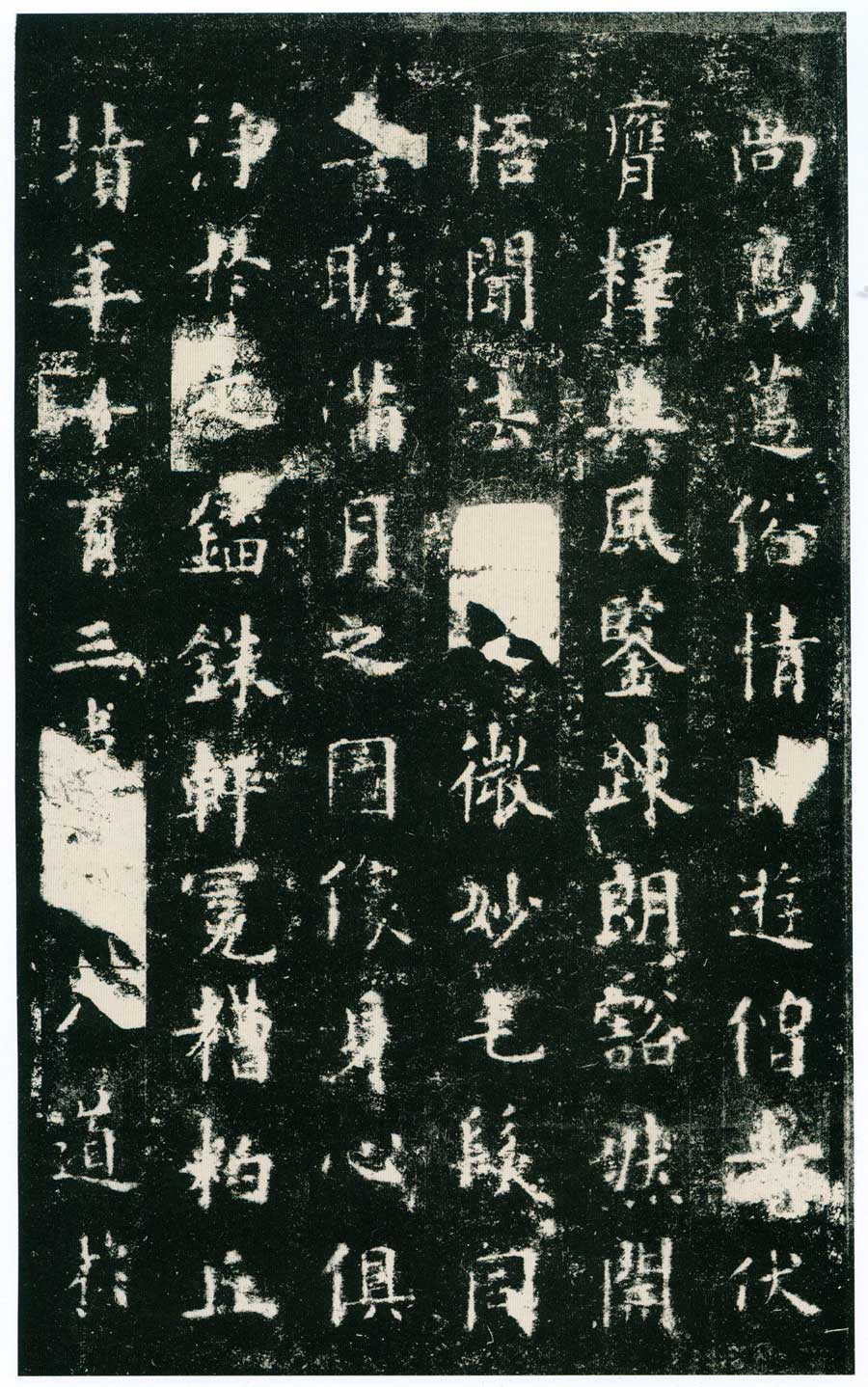
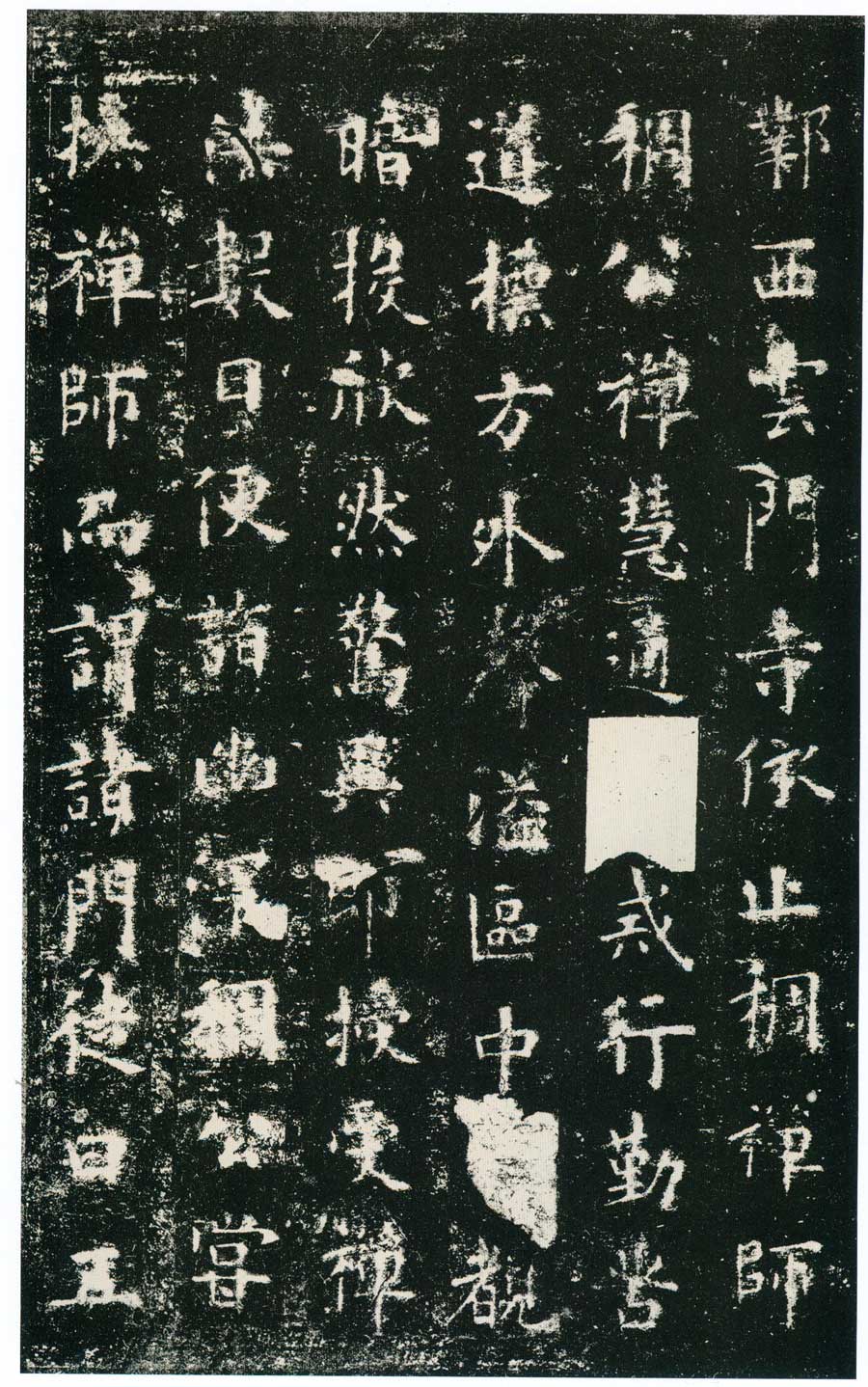
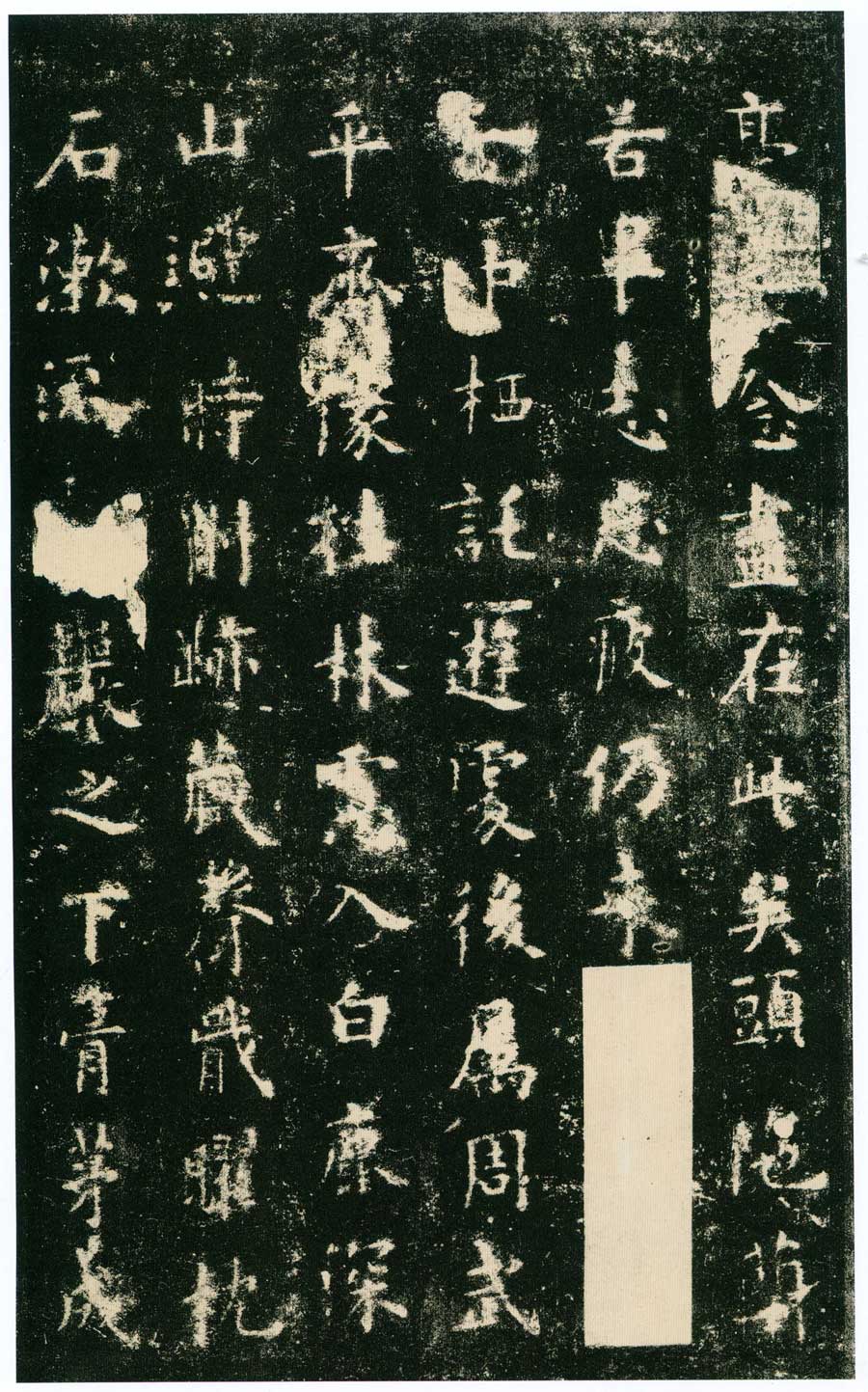
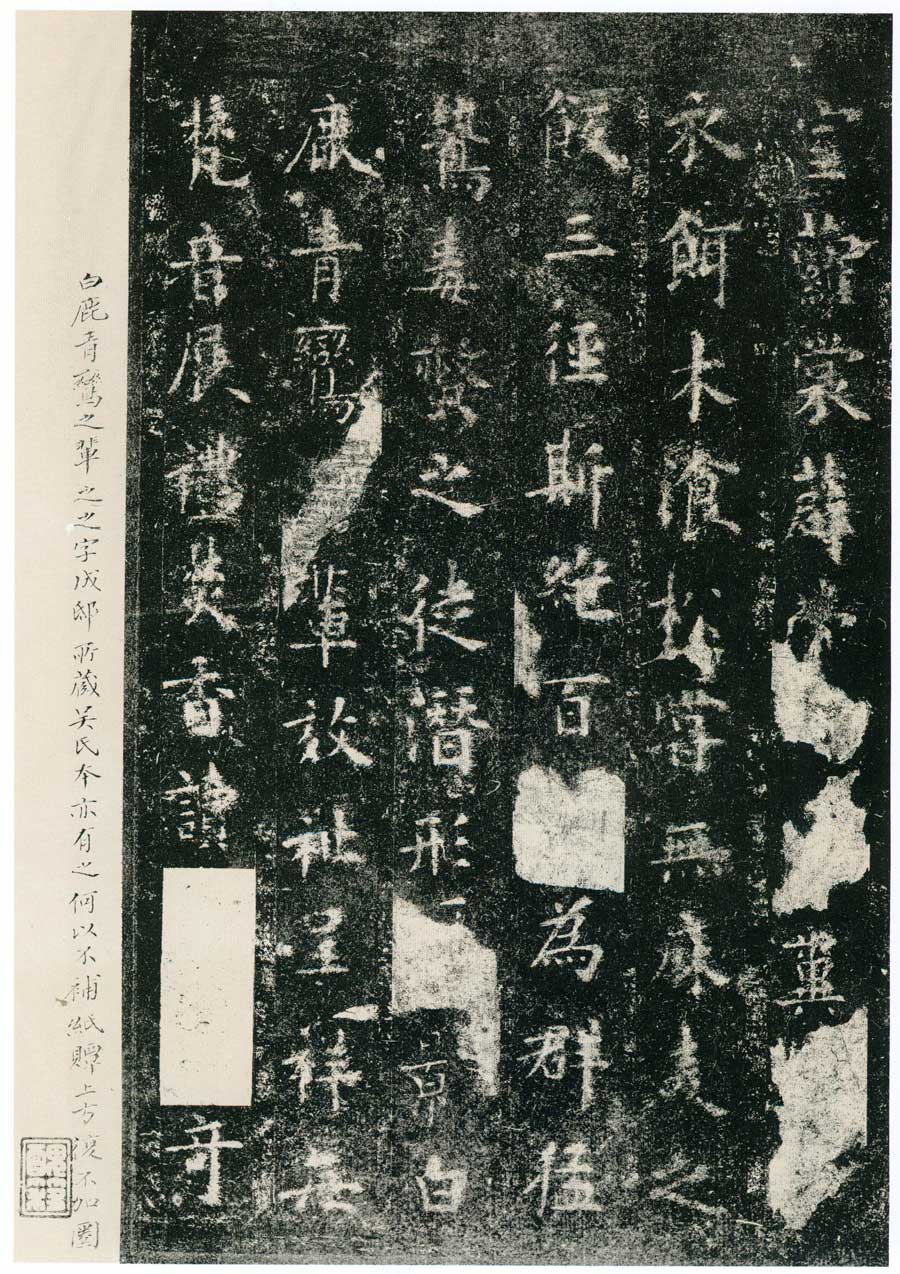
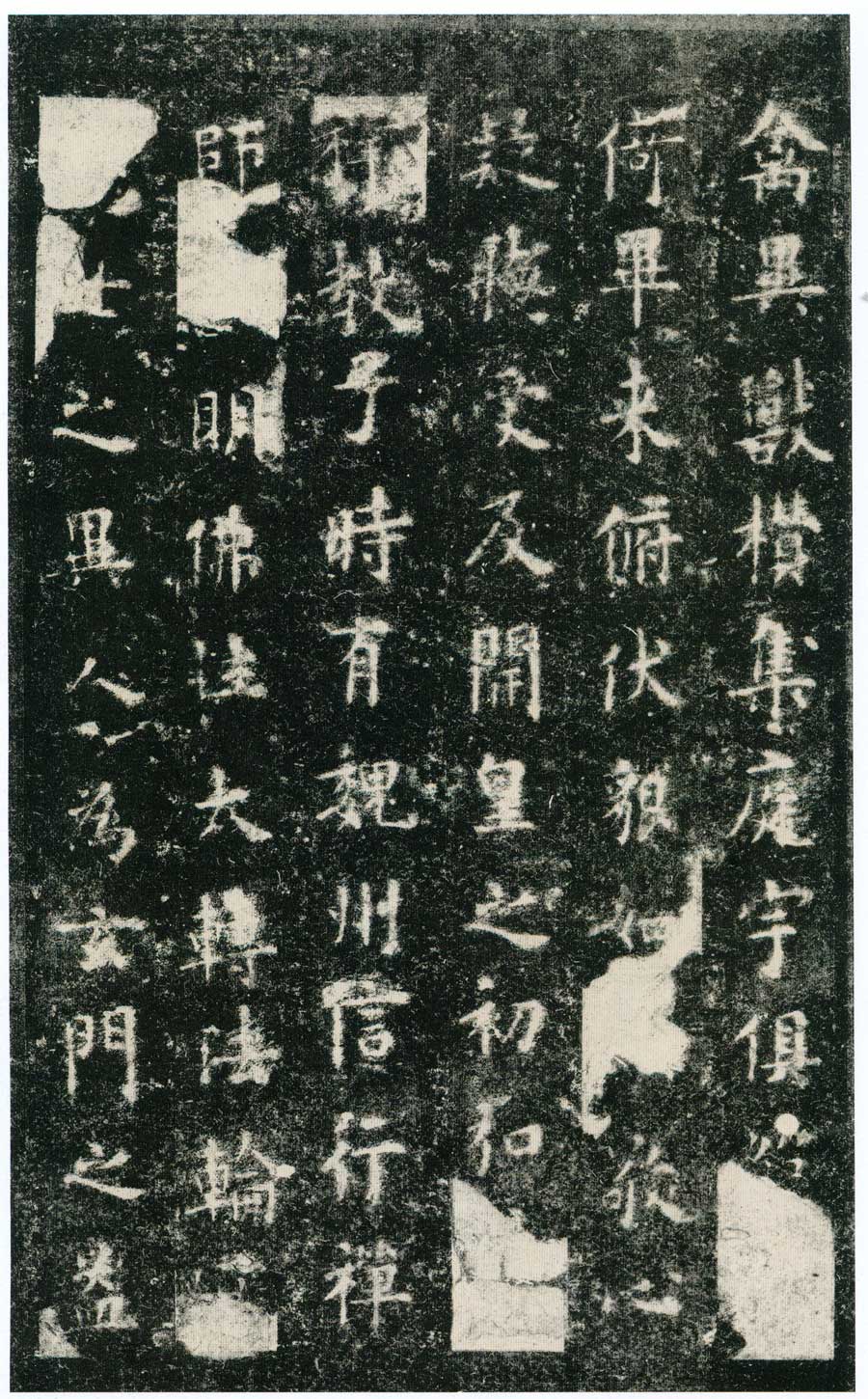
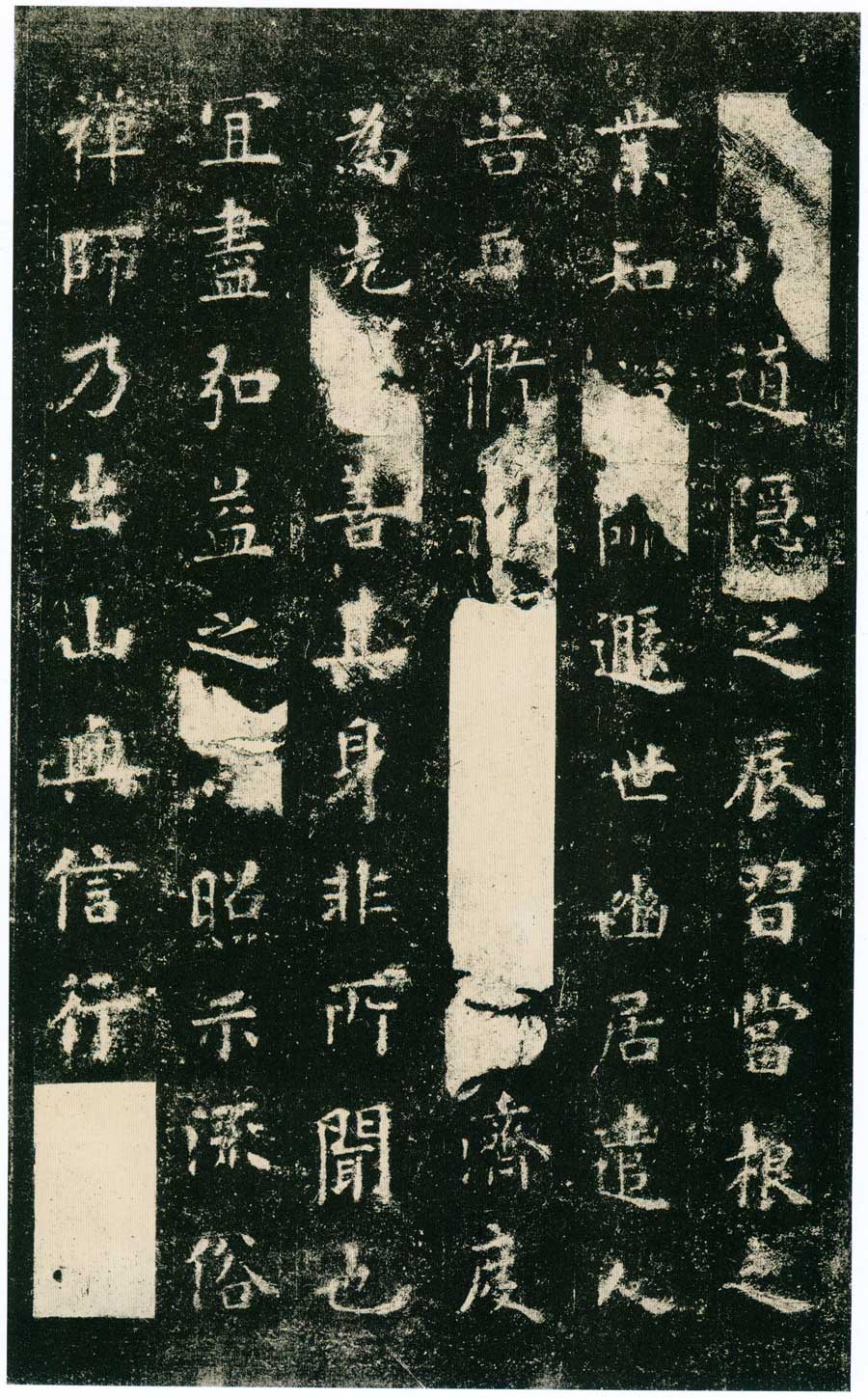
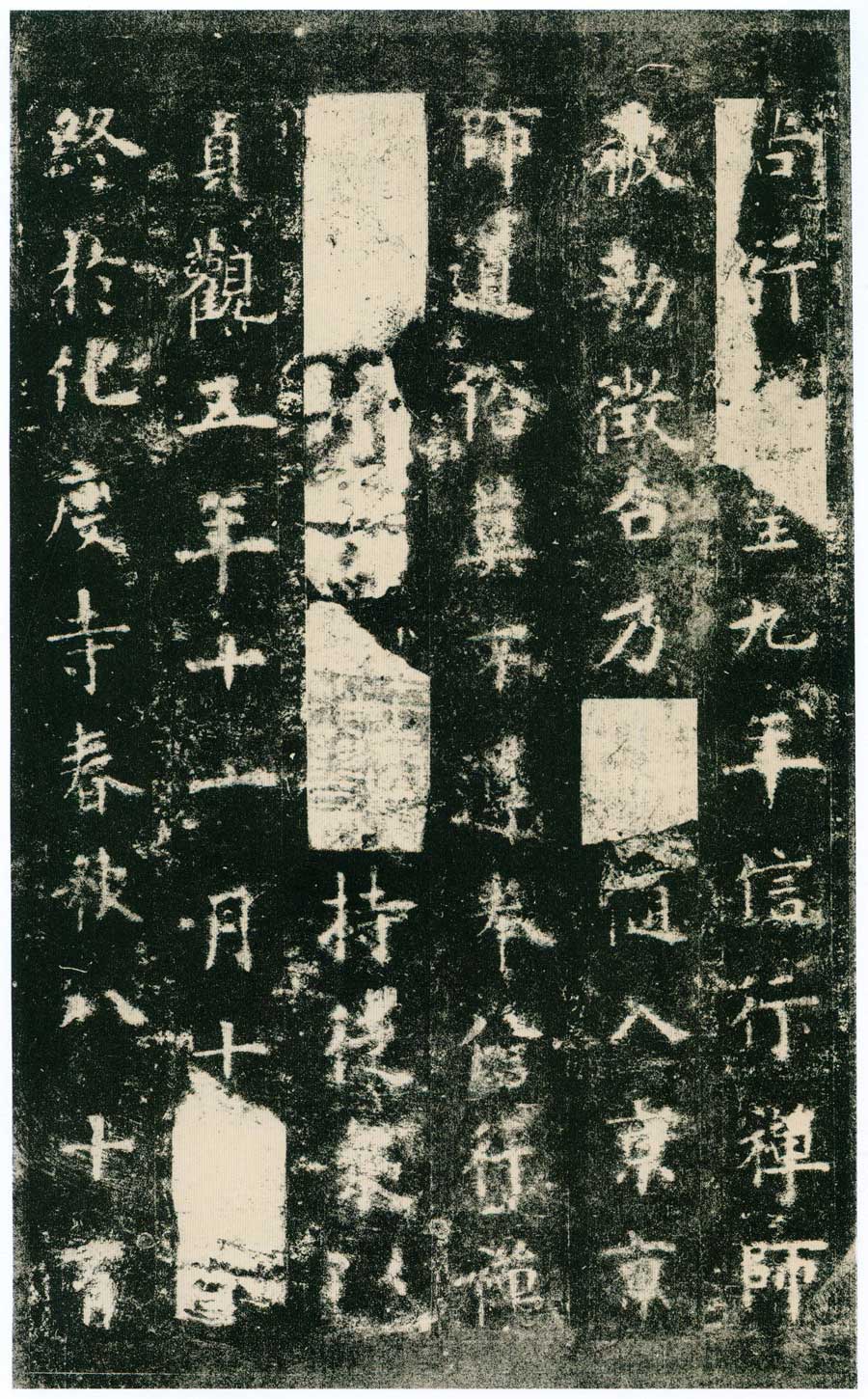
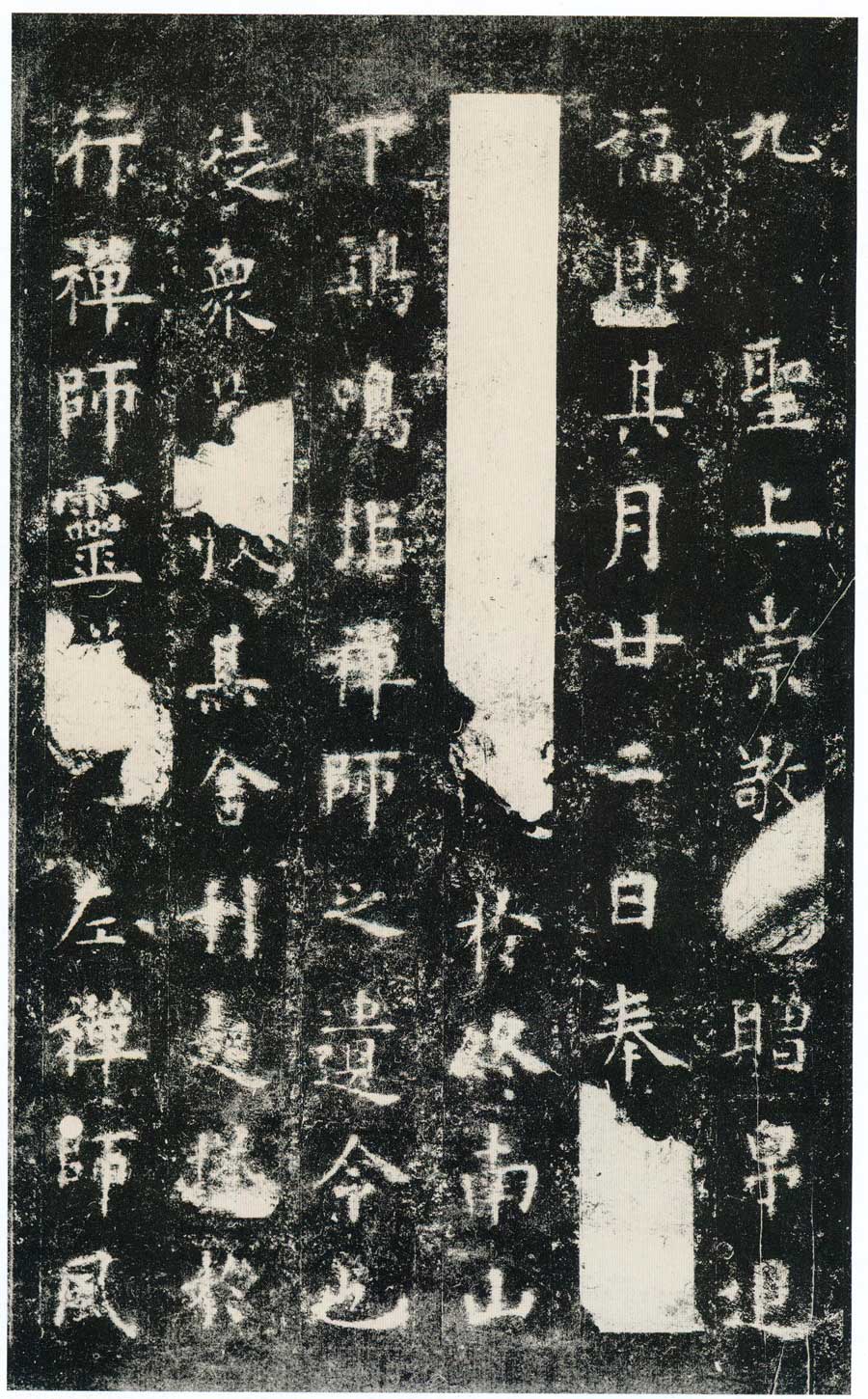
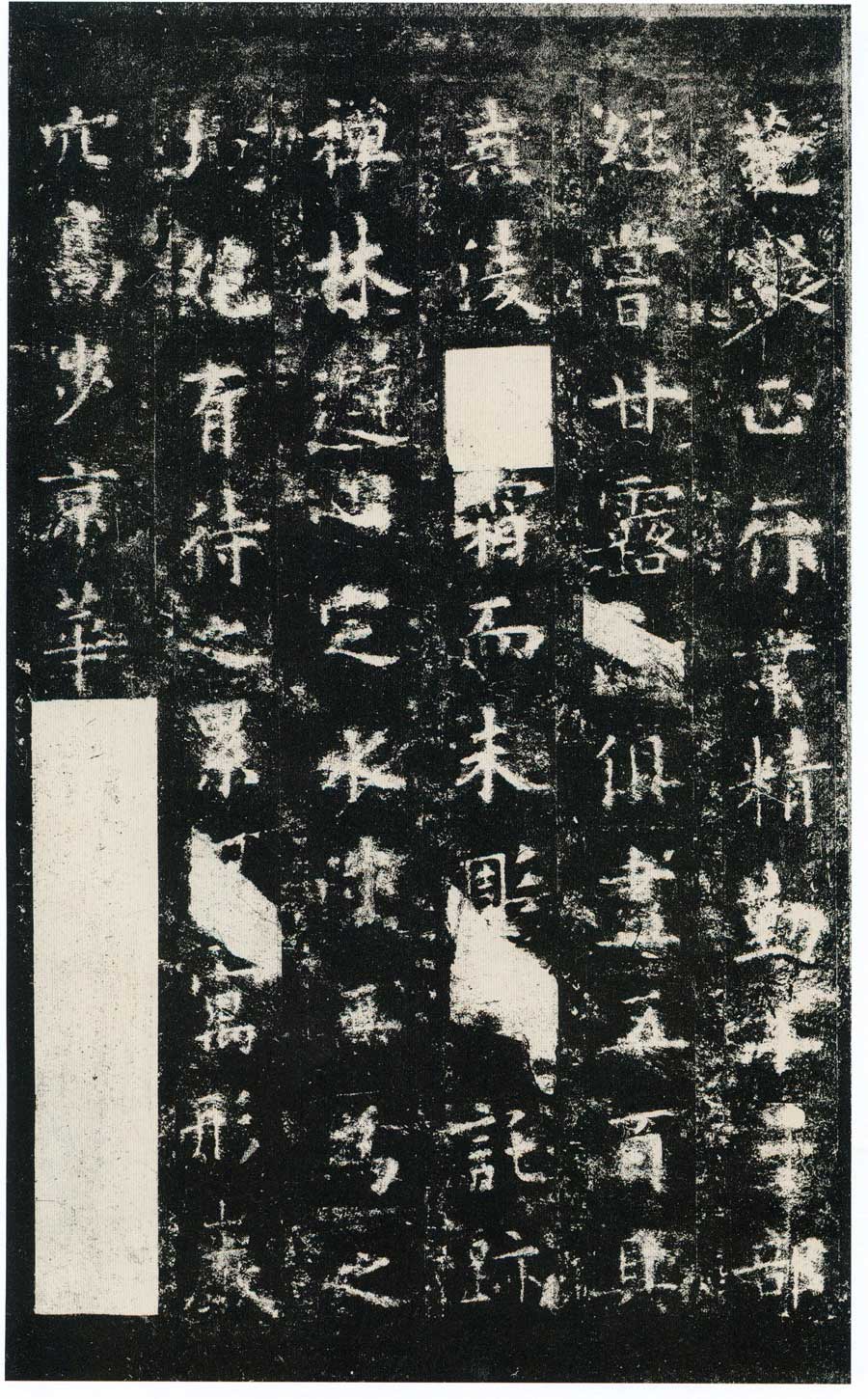
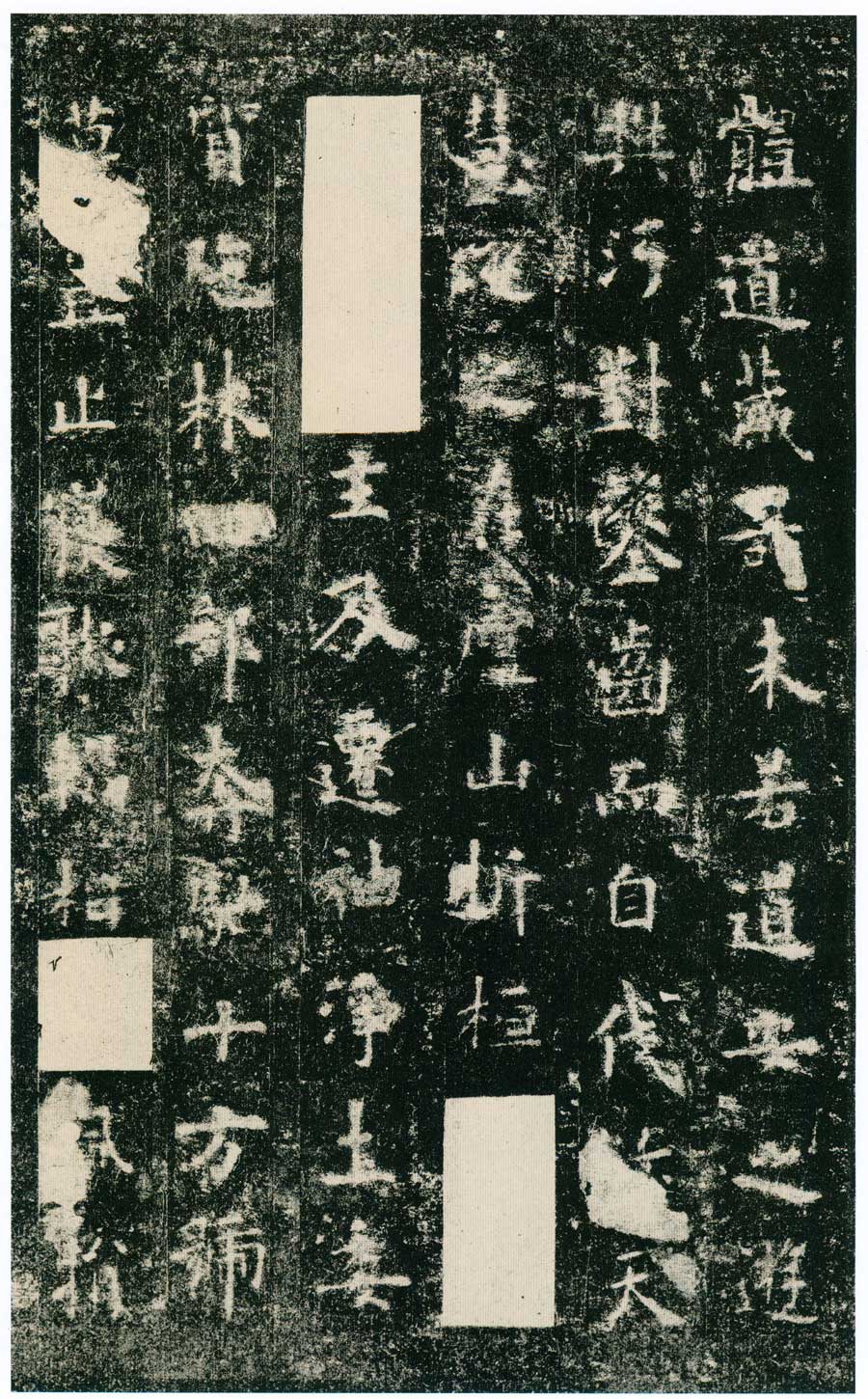
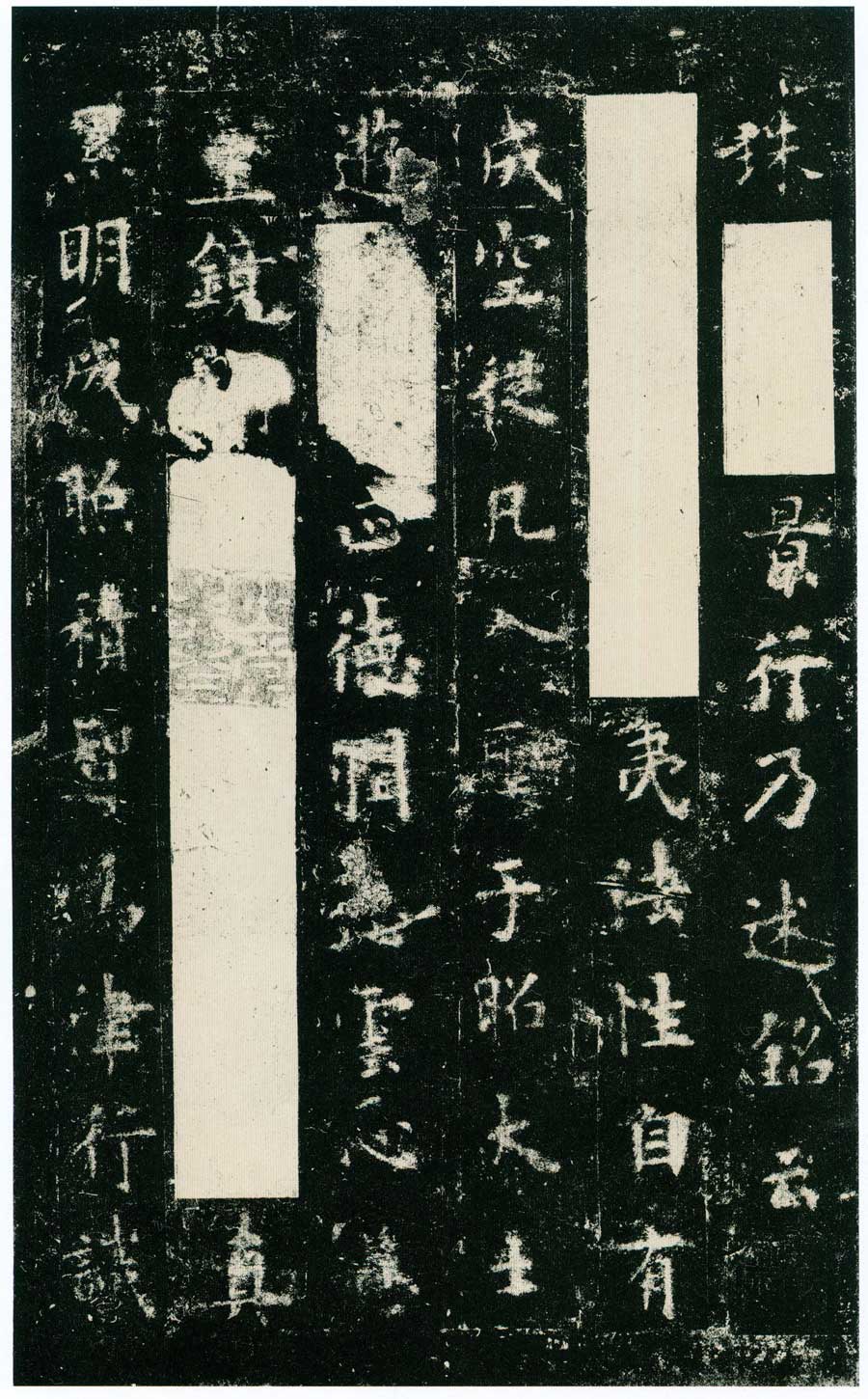
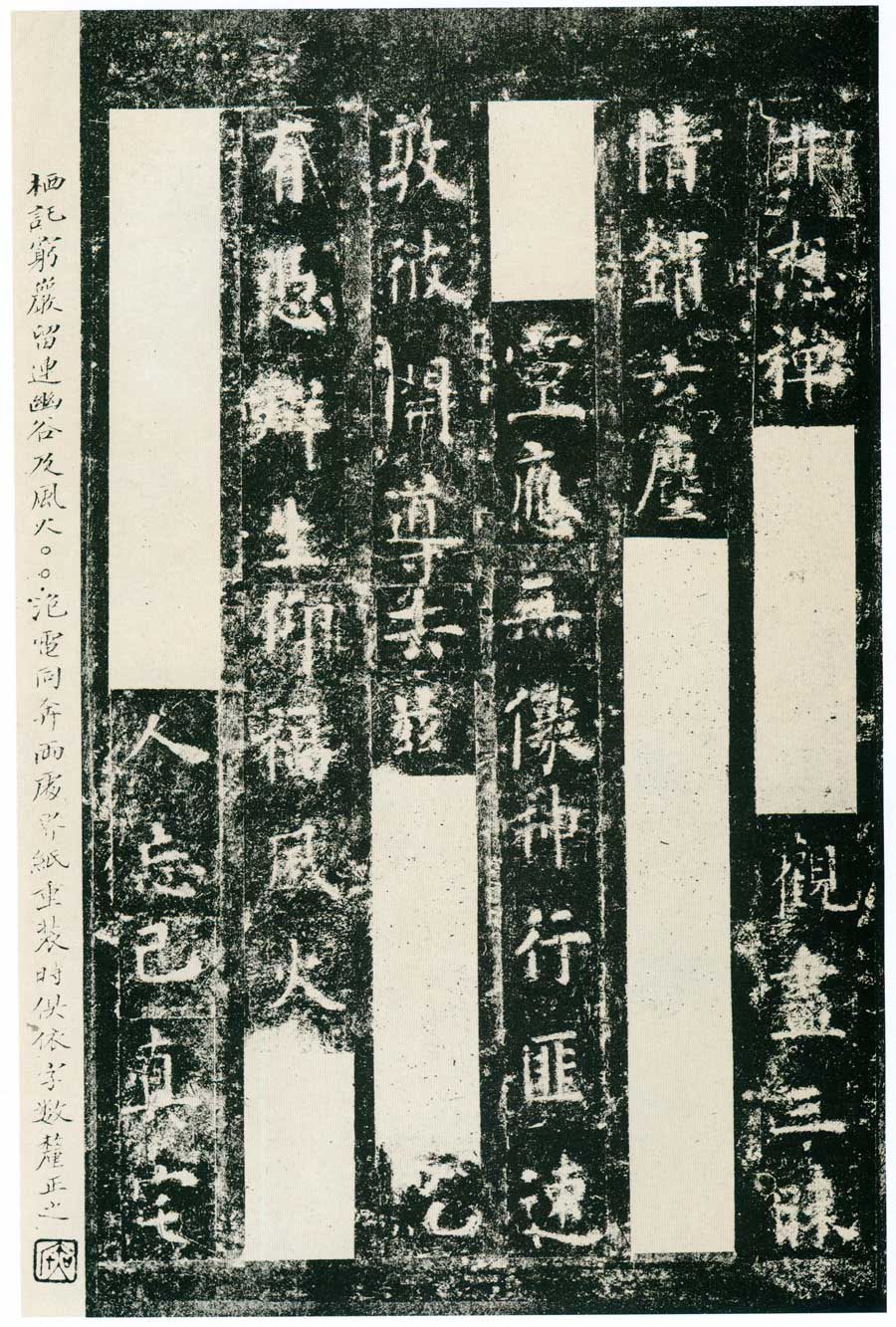
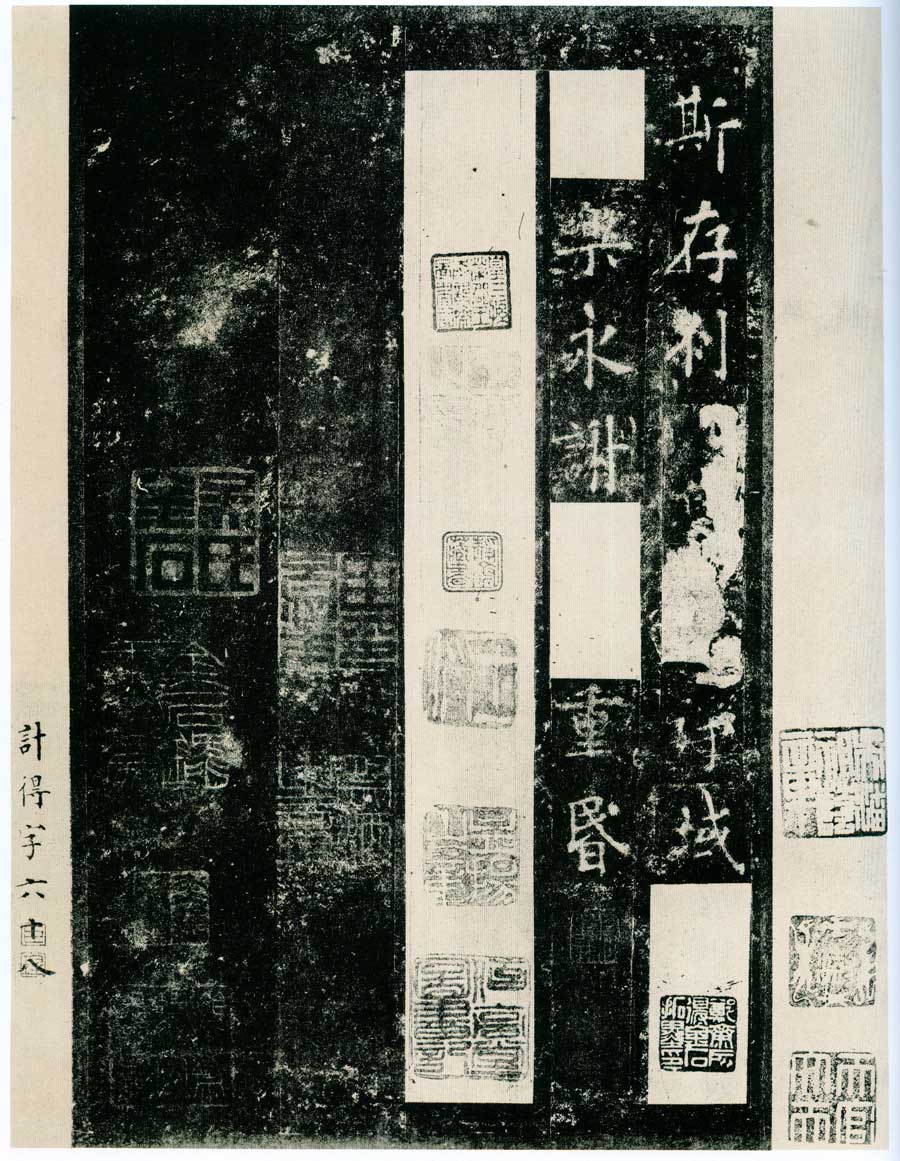
《化度寺碑》宋拓本 上海图书馆藏
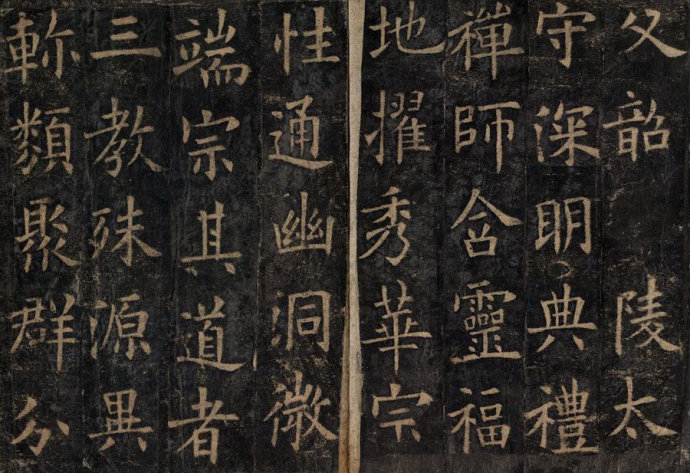
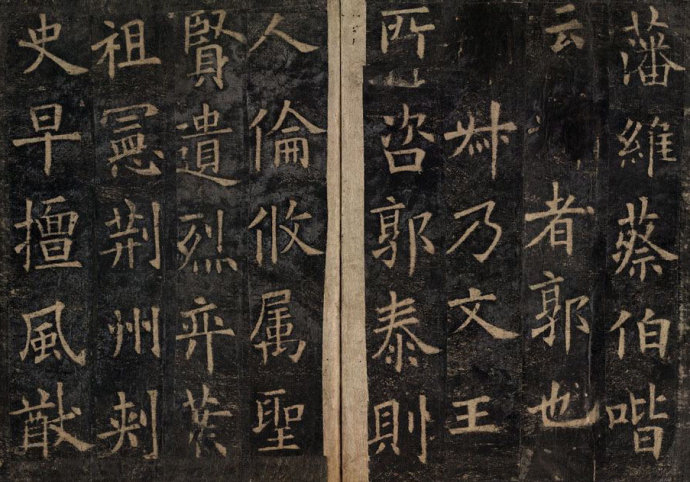
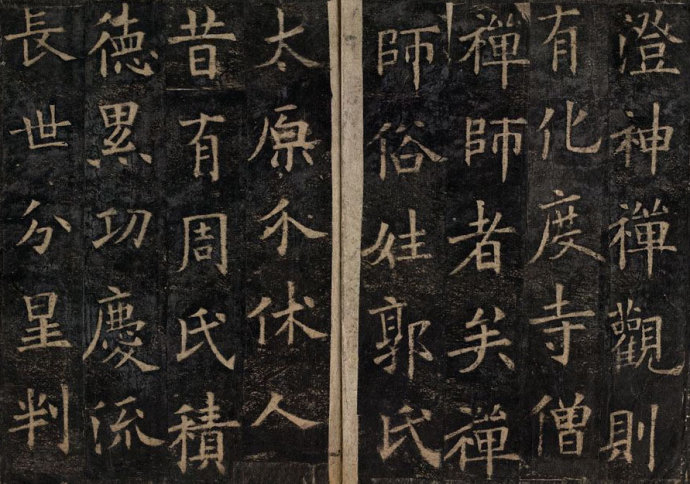
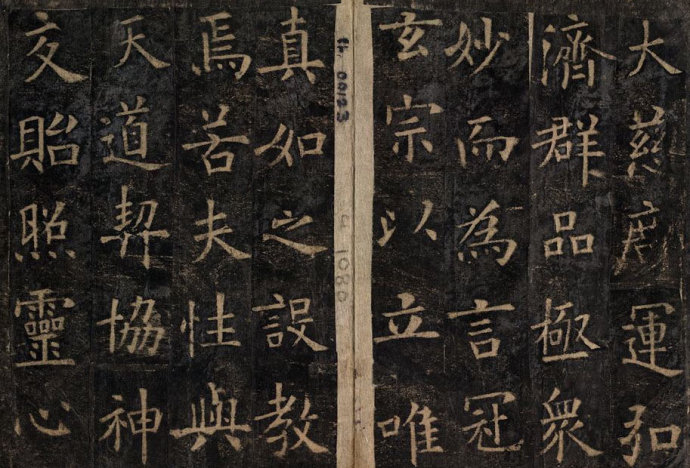
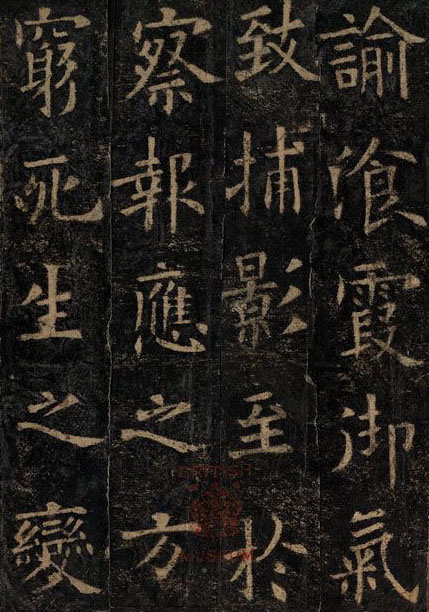
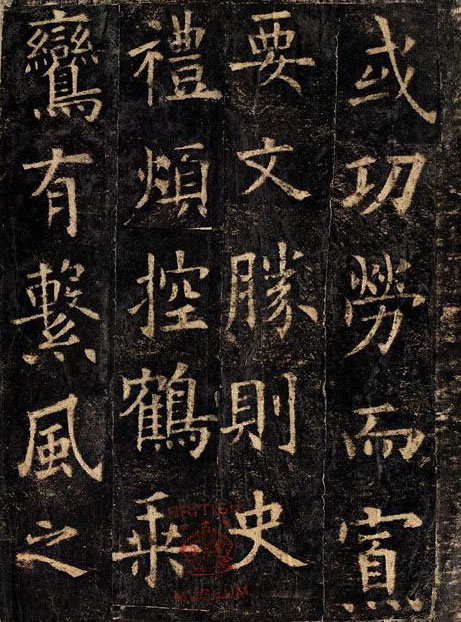
《化度寺碑》The Dunhuang Manuscripts in the British Library
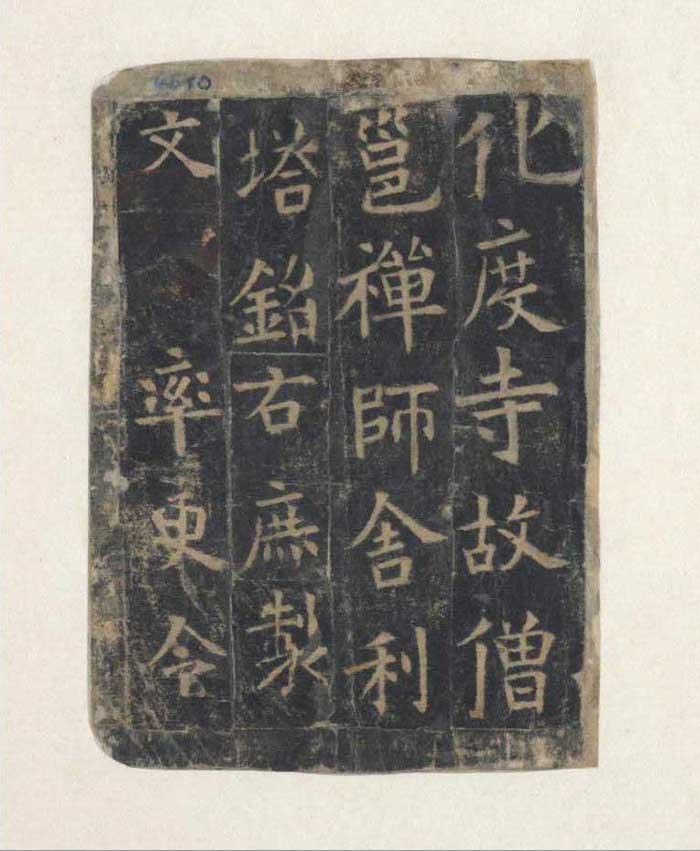
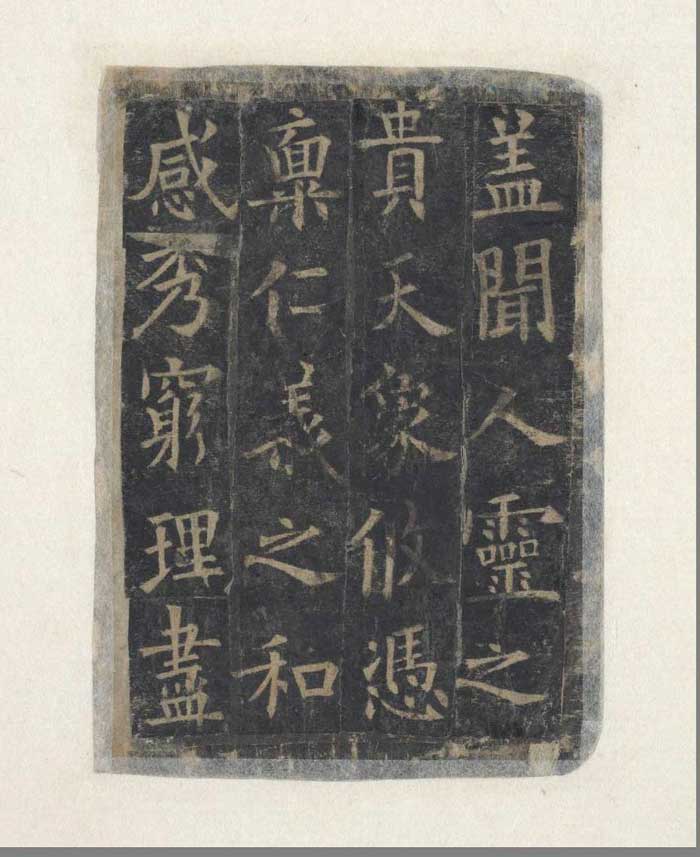
《化度寺碑》The Dunhuang Manuscripts in the French National Library Collection
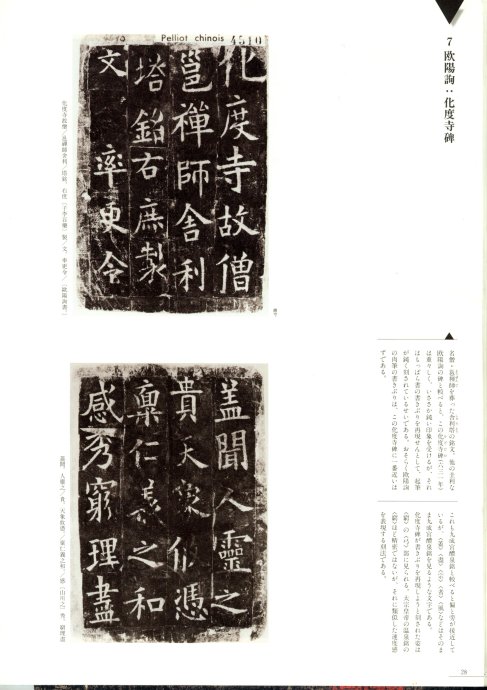

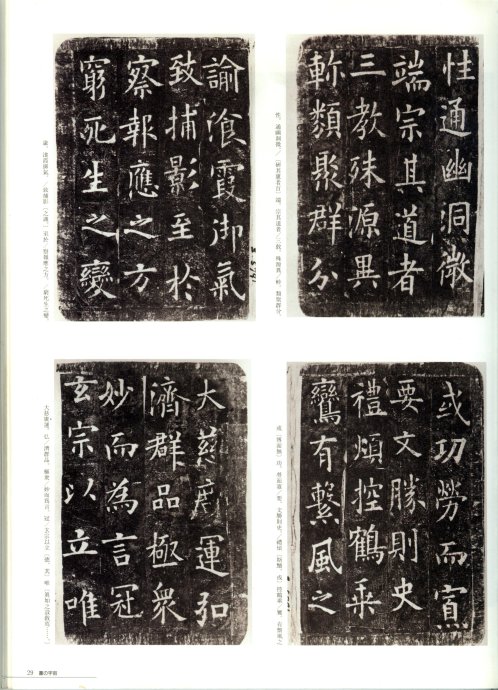

其他残本
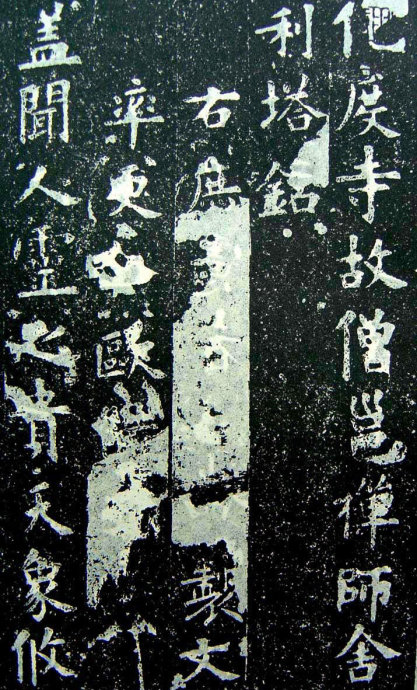
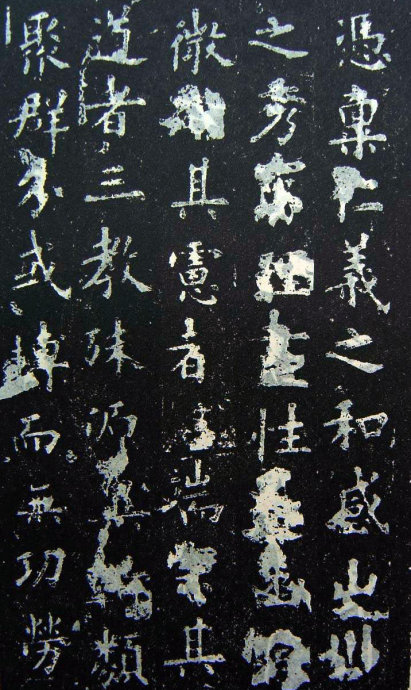
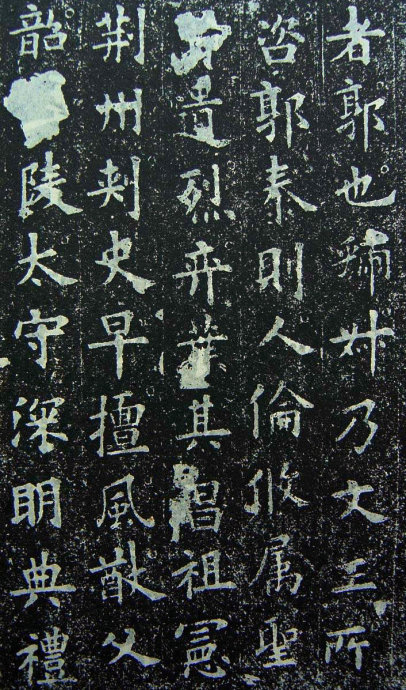
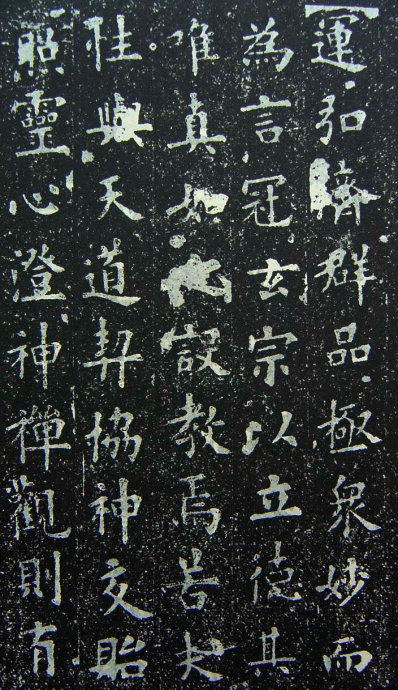
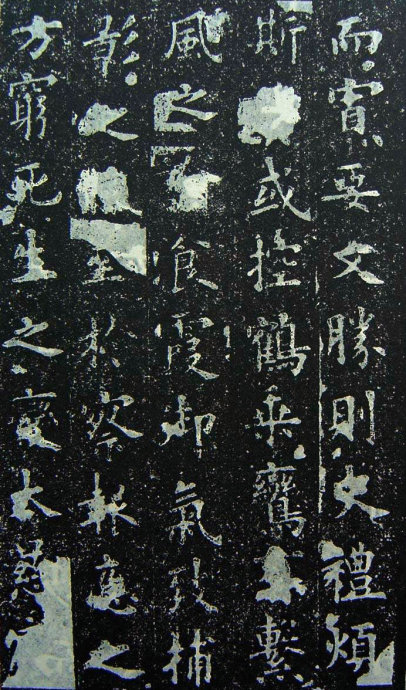
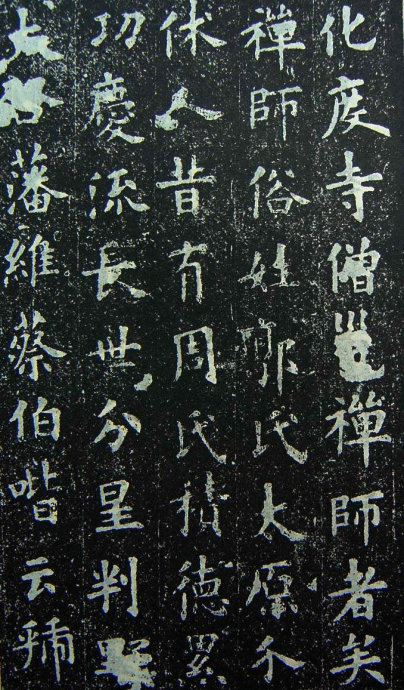
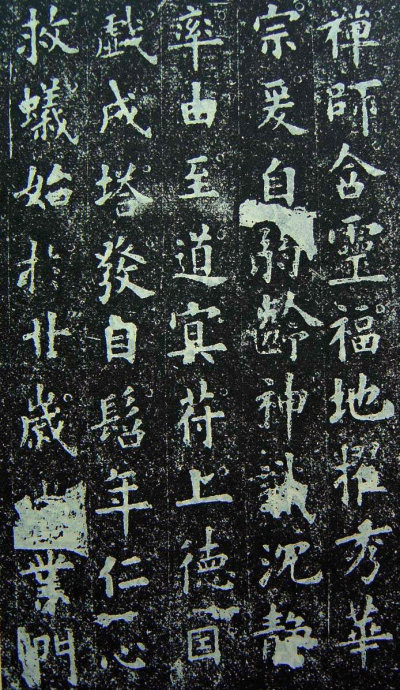
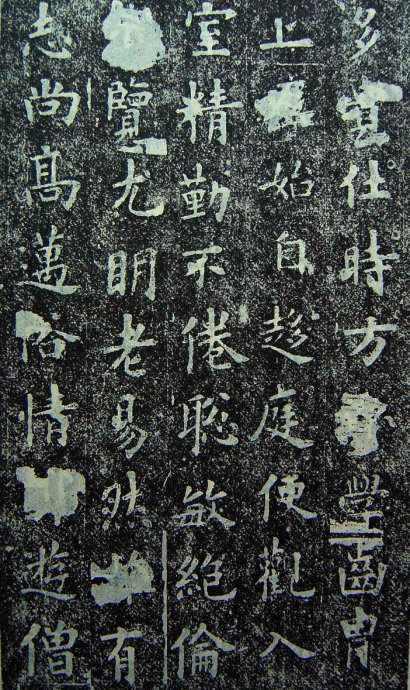
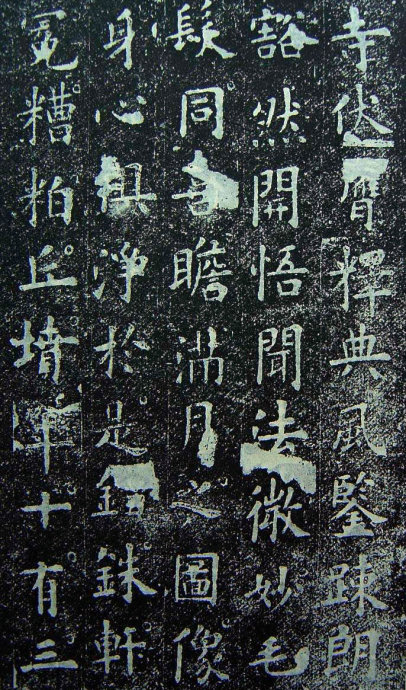
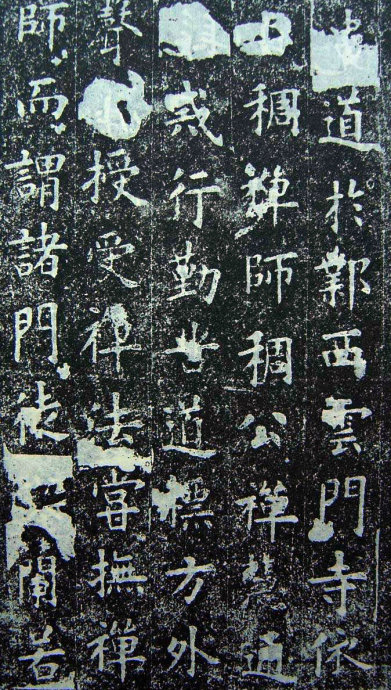
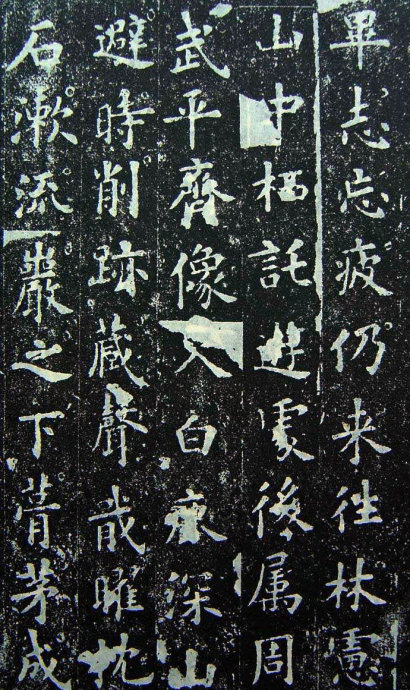
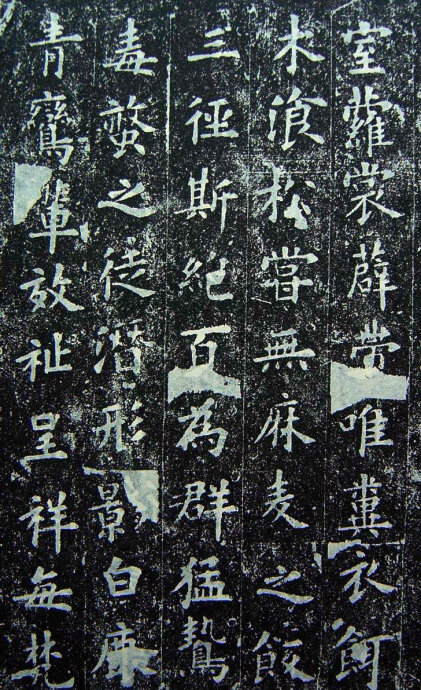
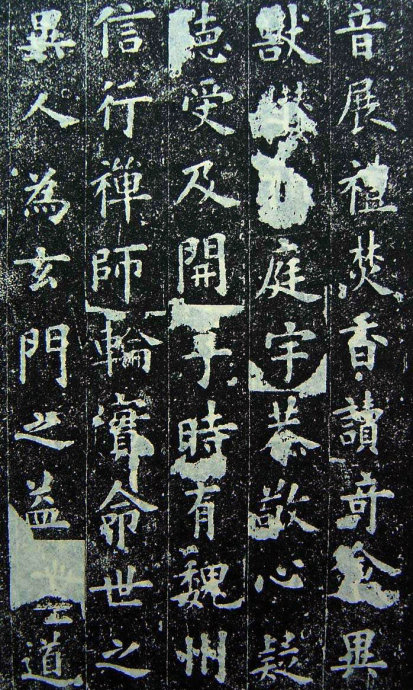
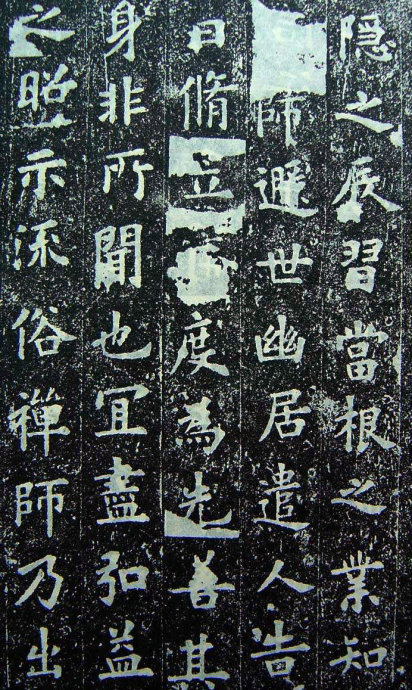
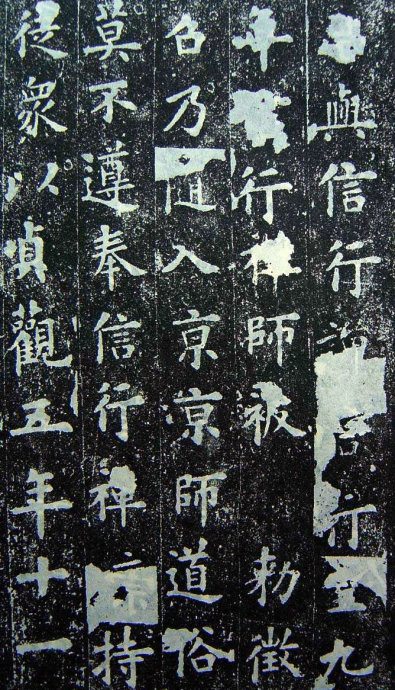
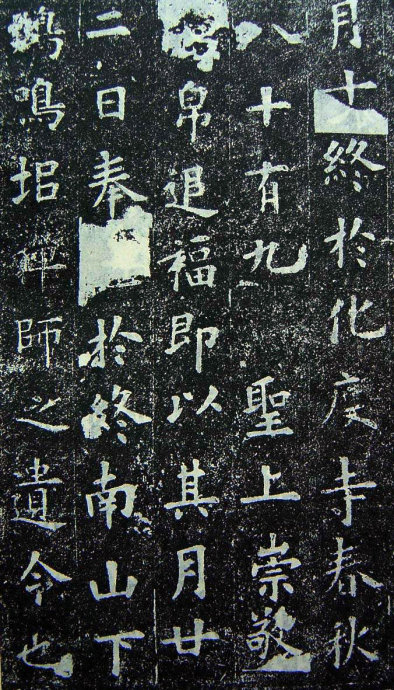
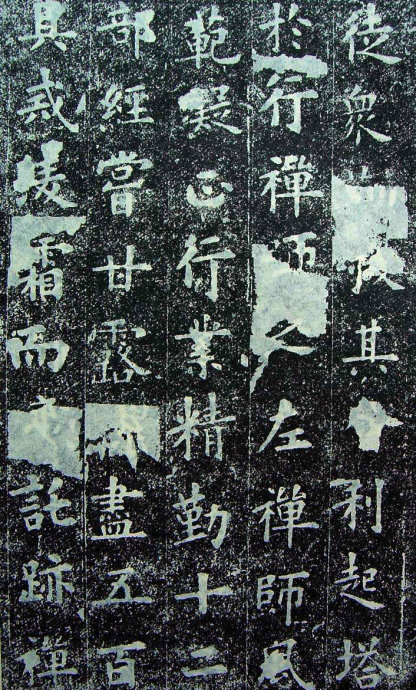
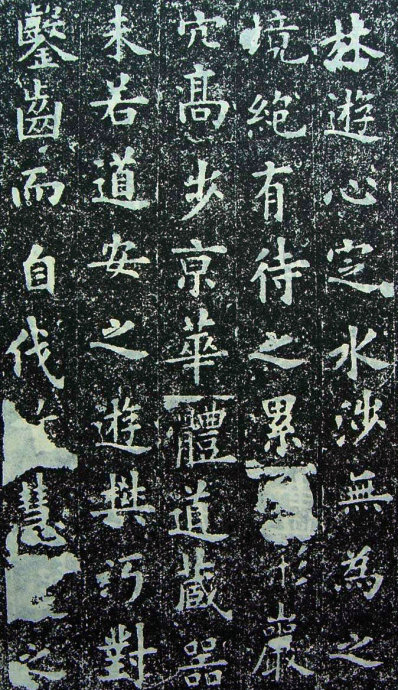
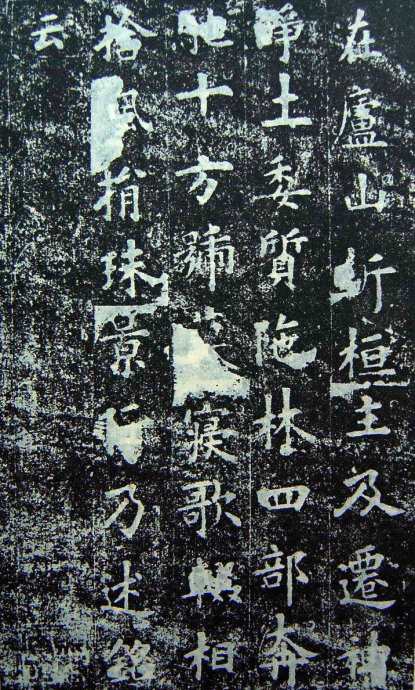
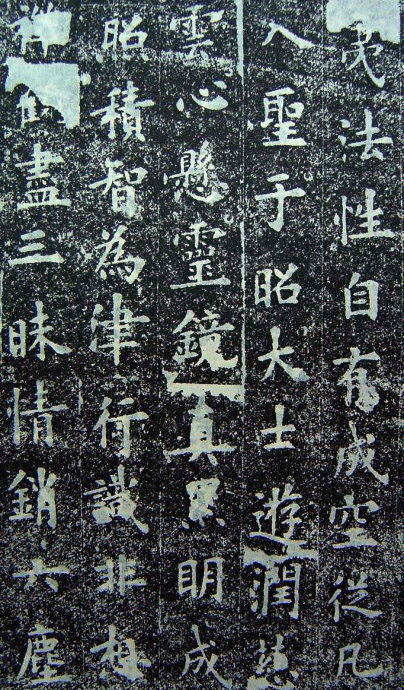
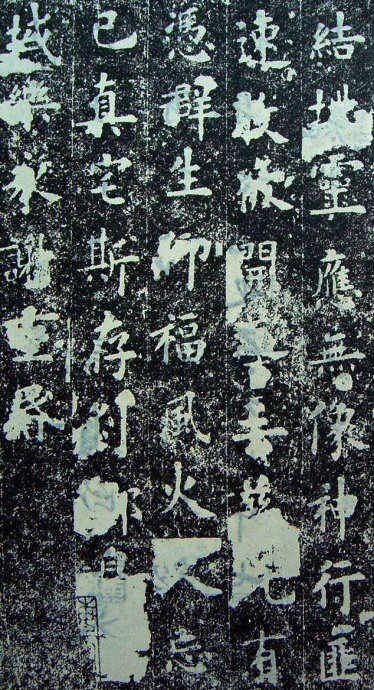
Other rubbings
Explanation:
盖闻人灵之贵,天象攸凭,禀仁义之和,感山川之秀,穷理尽性,通幽洞微。研其虑者百端,宗其道者三教,殊源异轸,类聚群分。或博而无功,劳而寡要,文胜则史,礼烦斯黩。或控鹤乘鸾,有系风之谕;餐霞御气,致捕影之讥。至於察报应之方,穷死生之变,大慈(阙)运宏济群品,极众妙而为言,冠元宗以立德,其唯真如之设教焉。若夫性与天道,契协神交,贻照灵心,澄神禅观,则有化度寺僧邕禅师者矣。禅师俗姓郭氏,太原介休人。昔有周氏,积德累功,庆流长世,分星判野,大启藩维。蔡伯喈云:「虢者郭也。虢叔乃文王所咨,郭泰则人伦攸属。」圣贤遗烈,奕叶其昌。祖宪,荆州刺史,早擅风猷。父韶,博陵太守,深明典礼。禅师含灵福地,擢秀华宗,爰自弱龄,神识沈静,率由至道,冥符上德。因戏成塔,发自髫年;仁心救蚁。始於岁。世传儒业,门多贵仕。时方小学,齿骨上庠,始自趋庭,便观入室,精勤不倦,聪敏绝伦,博览群书,尤明老易。然雅有志尚,高迈俗情,时游僧寺,伏膺释典,风鉴疏朗,豁然开悟。闻法海之微妙,毛同喜;瞻满月之图像,身心俱净。於是锱铢轩冤,糟粕邱坟,年十有三,违亲入道,於邺西云门寺,依止稠禅师。稠公禅慧通(阙)戒行勤苦,道标方外,声溢区中。(阙)睹暗投,欣然惊异,即授受禅法,数日便诣幽深。稠公尝抚禅师而谓诸门徒曰:「五亭(阙)念尽在此矣。」头ヌ兰若,毕志忘疲,仍来往林虑山中,栖托游处。後属周武平齐,像往林虑,入白鹿深山,避时削迹,藏声戢曜,枕石漱流。(阙)岩之下葺茆成室,萝裳薜带,(阙)唯粪(阙)之衣;饵术餐松,尝无麻麦之饭。三迳斯绝,百(阙)为群,猛鸷毒螫之徒;潜形匿影,白鹿青鸾之辈。效祉呈祥,每梵音瞻礼,焚香读(阙二字)奇禽异兽,攒集庭宇,俱绝(阙)倚毕来俯伏,貌如恭敬,心疑听受。及开皇之初,宏(阙)释教,於时有魏州信行禅师,(阙)明佛性,大转法轮,实命世之异人,为元门之益(阙)以道隐之辰,习当根之业,智禅师Т世幽居,遣人告曰:「修道立行,宜以济度为先,(阙)善其身,非所闻也。宜尽宏益之方,昭示流俗。」禅师乃出山,与信行禅(阙)修苦行。开皇九年,信行禅师被敕徵召,乃相随入京。京师道俗,莫不遵奉信行禅(阙三字)之(阙二字)持徒众,以贞观五年十一月十六日,终於化度寺,春秋八十有九。圣上崇敬(阙二字)赠帛追福,即以其月廿二日,奉送灵塔於终南山下鸱鸣圯,禅师之遗令也。徒众收其舍利,起塔於信行禅师灵塔之左。禅师风范凝正,行业精勤。十二部经,尝甘露而俱尽;五百具戒,凌严霜而未。虽托迹禅林,避心定水,涉无为之境,绝有待之累,(阙)寓形岩穴,高步京华,常卑辞屈已,体道藏器。未若道安之游樊沔,对凿齿而自伐弥天;慧远之在庐山,折桓元之致敬人主。及迁神净土,委质ヌ林,四部奔驰,十方号慕,岂止寝歌辍相,舍佩捐珠而已?式昭景行,乃述铭云:
绵邈神理,希夷法性。自有成空,从凡入圣。於昭大士,游(阙二字)正,德润慈。心悬灵镜,(阙)蒙悟道,舍俗归真。累明成照,积智为津。行识非想,禅(阙三字)观尽三昧,情销六尘。结构穷岩,留连幽谷。灵应无像,神行匪速。敦彼开导,去兹(阙三字)绝有凭群生仰福,风火(阙)妄泡电同奔。达人忘已,真宅斯存。刹那(阙二字)净域(阙五字)乐永谢重昏。

